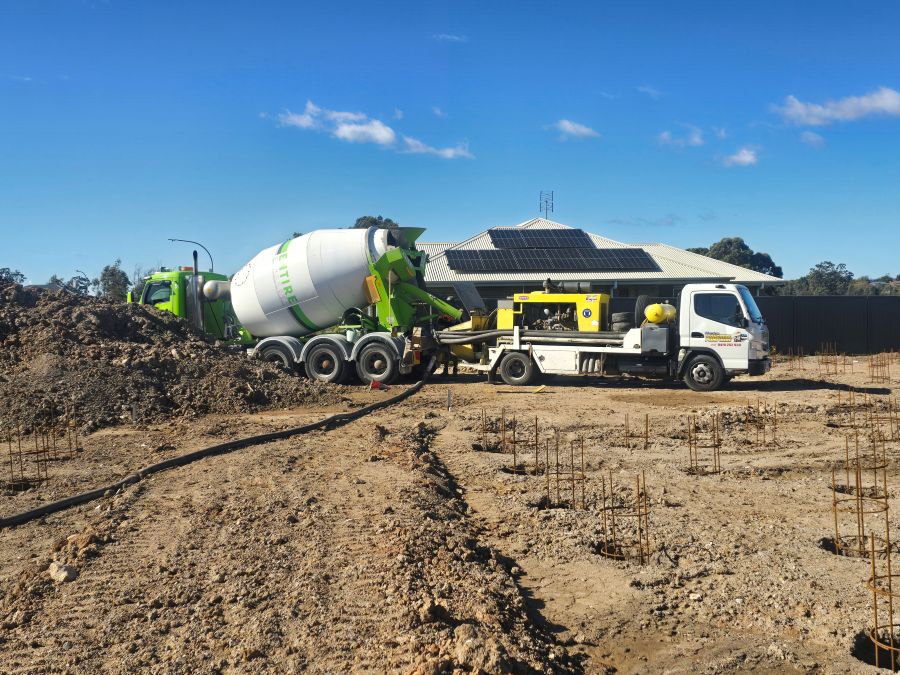Essential Best Practices for Achieving Safe Concrete Pumping in 2025
As we navigate the evolving landscape of concrete pumping safety in 2025, it becomes increasingly important to prioritise comprehensive training, meticulous equipment checks, clearly defined exclusion zones, and thorough pre-start planning. Acknowledging the inherent risks associated with concrete pumping is crucial, and strictly adhering to established safety protocols is vital to averting accidents and ensuring that construction projects progress smoothly. By placing a high priority on these safety measures, workers can cultivate a secure working environment that not only enhances efficiency but also boosts productivity, ultimately laying a solid foundation for successful project completion.

Identifying and Reducing Common Hazards in Concrete Pumping Operations
According to SafeWork NSW, both operators and workers involved in concrete placement face considerable risks during the setup and operation of concrete pumps. These hazards can encompass:
- Unstable ground conditions or improper setup on sloped surfaces, which can culminate in serious accidents.
- Utilising equipment beyond its design specifications, which significantly increases the likelihood of mechanical failure.
- Proximity to overhead power lines, leading to severe electrocution hazards.
- Collisions involving trucks, structures, or personnel on site, resulting in potentially serious injuries.
- Hose whip and line surges, which can create perilous situations if not effectively managed.
- Unexpected equipment failure and blockages that can disrupt operations.
- Exposure to crush zones, diesel fumes, and excessive noise levels, which can negatively impact health.
- Slip, trip, and confined space hazards that may lead to significant injuries.
These risks are not merely theoretical; they frequently manifest when safety procedures are either neglected or inconsistently enforced. Therefore, our unwavering commitment remains focused on critical safety aspects on-site, ensuring that every worker is well-informed and adheres to established protocols for a safer working environment.
1. Emphasise Training and Certification for Every Crew Member
Considering that concrete pumps operate under high pressure, it is imperative to enforce stringent handling requirements for operators. In NSW, it is essential that operators possess:
- An HR licence for operating boom trucks, verifying their qualifications.
- Verified VOCs (Verification of Competency) to confirm their skill level.
- Training in hazard recognition along with a comprehensive understanding of emergency stop procedures.
Furthermore, hose handlers must receive extensive briefings to ensure they do not stand in discharge zones and can swiftly identify blockages, which is crucial for maintaining operational safety and preventing accidents. This thorough preparation is essential for fostering a culture of safety on the job site.
2. Create Exclusion Zones to Enhance Safety Protocols
Concrete under pressure moves rapidly and can pose extreme danger if released unexpectedly. Therefore, it is vital to establish clearly marked safety zones around the hose and boom at all times. Key safety measures to implement include:
- Utilising barriers and flagging to define risk areas surrounding the pumping operation.
- Prohibiting personnel from standing in front of the discharge area to prevent potential injuries.
- Restricting movements beneath booms to mitigate the risks of accidents.
3. Conduct Thorough Equipment Checks Before Each Pour
Every concrete pumping job begins with a comprehensive equipment inspection. At Hunter Concrete Pumps, we meticulously check:
- Hoses and reducers to ensure they are in optimal working condition and free from defects.
- Couplings and clamps to guarantee secure and reliable connections.
- The integrity of the boom and seals to prevent any potential leaks.
- Primer levels, ensuring that the pump operates smoothly and effectively during the pour.
- Emergency shutoff systems to ensure immediate response capabilities in the event of an incident.
No operation commences without the pump successfully passing all inspections, reinforcing our steadfast commitment to safety and operational efficiency in every project.
4. Appoint a Lead Operator for Effective Coordination
Effective communication is paramount in the success of concrete pumping operations. Each crew must designate one lead operator who is responsible for overseeing the pour and ensuring coordination with:
- Agitator drivers to synchronise operations for a seamless pour.
- Hose handlers who safely and efficiently manage the flow of concrete.
- Site supervisors to ensure strict adherence to site regulations and safety protocols.
- Concreters and finishers to achieve the desired outcomes for the project.
This clear chain of command is essential for preventing mistakes and misfires, ultimately enhancing both the safety and efficiency of the operation.
5. Initiate Every Pour with a Comprehensive Safety Briefing
Before commencing the pump operation, it is critical for the crew to discuss several essential topics, including:
- Site access and hose routing for optimal flow management and safety.
- Emergency response plans and first aid protocols to ensure preparedness in case of incidents.
- Truck staging and washout procedures to maintain site cleanliness and orderliness.
- Identifying slip risks and ensuring the appropriate use of PPE (Personal Protective Equipment) for every crew member.
- Defining the roles of spotters where necessary to further enhance safety and monitoring.
At Hunter Concrete Pumps, we implement these protocols rigorously on every job without exception, ensuring the safety of our crew and the integrity of the project is always upheld.
The Crucial Importance of Safety in Concrete Pumping Operations
Ensuring safe concrete pours not only protects your crew but also safeguards your project timeline, budget, and reputation. A lapse in safety can lead to injuries, project delays, or regulatory scrutiny, which are substantial risks that must not be overlooked. We strictly adhere to the SafeWork NSW guidelines for concrete pumping on every job. Our operators are not only trained but also licensed and insured, ensuring that when you choose our services, you are selecting a provider that integrates safety into every aspect of the process, giving you peace of mind.
Do I Need to Provide Spotters or Safety Personnel for My Concrete Pour?
For both civil and commercial job sites, the answer is yes; spotters or safety personnel are essential for upholding high safety standards. However, for residential projects, our dedicated pump crews are highly skilled in effectively managing the safety zones, ensuring the site remains secure throughout the operation. We will inform you of any specific requirements during the quoting process to ensure clarity and compliance with all safety regulations.
What Are the Most Common Safety Risks Associated with Concrete Pumping Jobs?
The three primary risks associated with concrete pumping include untrained hose handling, inadequate access planning, and the absence of exclusion zones. We proactively address all three of these critical issues before the concrete pour commences, ensuring a safer working environment for all involved in the operation.
Experience Efficient and Safe Concrete Pours Through Our Expertise
Concrete pumping safety is not merely about adhering to regulations; rather, it focuses on ensuring the job is completed without injuries or delays. When your team is well-versed in safety procedures and your operator arrives fully equipped and prepared, the concrete pour can proceed smoothly, rapidly, and without complications, paving the way for successful project outcomes that meet and exceed expectations.
Concrete Pump Hire
The Article: Concrete Pumping Safety Protocols: 2025’s Top 5 Tips first appeared on https://writebuff.com
The Article Concrete Pumping Safety Tips: Top 5 Protocols for 2025 Was Found On https://limitsofstrategy.com

